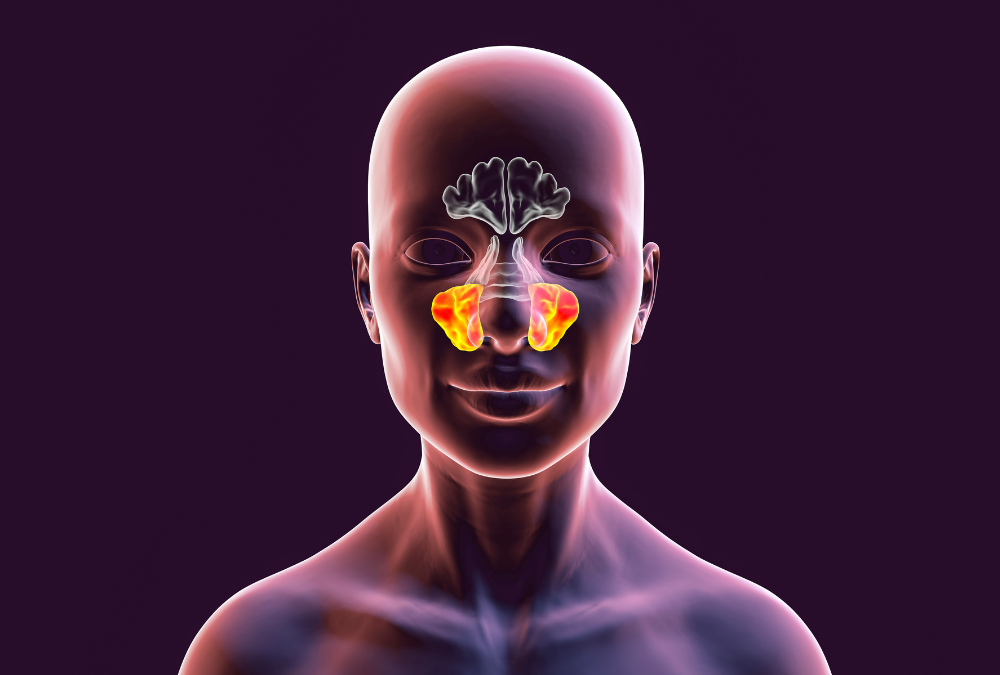Millions of people worldwide suffer from nasal congestion, a condition that can significantly impact their quality of life. Traditional treatments for nasal congestion, such as medications and nasal sprays, often provide only temporary relief. For those seeking a more permanent solution, VivAer in Orange County, a non-surgical nasal treatment, has emerged as a promising option.
VivAer utilizes radiofrequency energy to reshape the nasal valve area, the narrowest part of the nasal passage, which is often the primary cause of nasal obstruction. This minimally invasive procedure offers several advantages over traditional nasal surgery, including less pain, discomfort, and downtime.
If you are considering VivAer, you may have questions about the procedure, its effectiveness, and whether it is right for you. This comprehensive guide will address common concerns and questions about VivAer, providing you with the information you need to make an informed decision about your nasal health.
What Is VivAer in Orange County?
VivAer is a minimally invasive procedure that utilizes radiofrequency energy to reshape the nasal valve area. The nasal valve is the most common site of nasal obstruction, and VivAer works by shrinking the nasal valve tissue, which helps to improve nasal airflow.
How Does VivAer work?
The VivAer procedure is typically performed in a doctor’s office and takes less than 20 minutes. The doctor will first apply a local anesthetic to the nasal passages to numb the area. Then, they will insert a small device into the nasal passages that delivers radiofrequency energy. The radiofrequency energy will shrink the nasal valve tissue, which will help to improve nasal airflow.
Benefits of VivAer in Orange County
VivAer offers several benefits over traditional nasal surgery, including:
Minimally invasive procedure: VivAer does not require incisions or general anesthesia, making it a less invasive option than traditional nasal surgery.
Quick procedure: The VivAer procedure typically takes less than 20 minutes to complete.
Reduced pain and discomfort: VivAer is associated with significantly less pain and discomfort than traditional nasal surgery.
Faster recovery: Patients can typically resume their normal activities immediately after the VivAer procedure.
Long-lasting results: VivAer results are intended to be long-lasting, providing relief from nasal congestion for an extended period.
Common Nasal Issues VivAer Addresses
VivAer in Orange County can effectively treat a variety of nasal conditions, including:
Deviated septum: A deviated septum occurs when the cartilage separating the nostrils is crooked, causing obstruction in one or both nasal passages.
Nasal congestion: Nasal congestion is the feeling of a blocked or stuffy nose, often caused by inflammation, allergies, or a deviated septum.
Sinusitis: Sinusitis is inflammation of the sinuses, the air-filled cavities in the face around the nose.
Allergies: Allergies can cause inflammation in the nasal passages, leading to congestion, runny nose, and sneezing.
Sleep apnea: Sleep apnea is a sleep disorder characterized by pauses in breathing during sleep, which can be caused by nasal obstruction.
Nasal polyps: Nasal polyps are small, noncancerous growths that can form in the nasal passages and contribute to congestion.
Chronic rhinitis: Chronic rhinitis is inflammation of the nasal passages that lasts for more than three months.
Comparing VivAer in Orange County to Traditional Nasal Surgery
VivAer and traditional nasal surgery share the common goal of enhancing nasal airflow, but they diverge substantially in their methods and resulting outcomes.
Procedure time: VivAer is remarkably quicker, typically requiring less than 20 minutes, while traditional nasal surgery can last anywhere from 1 to 2 hours.
Anesthesia: VivAer is conducted with local anesthesia, offering a more convenient and less invasive option in contrast to traditional nasal surgery, which typically necessitates general anesthesia.
Downtime: Downtime is notably shorter with VivAer, typically involving no significant recovery period, whereas traditional surgery may require 1 to 2 weeks of downtime.
Pain levels: Pain levels also differ, with VivAer generally causing minimal discomfort, while traditional nasal surgery can result in moderate to severe pain.
Recovery: Recovery from VivAer is faster, making it an attractive option for many, although it carries lower risks compared to traditional surgery. Both procedures can yield long-lasting results.
As evident from the comparison, VivAer offers several advantages over traditional nasal surgery, making it a more favorable option for many individuals seeking relief from nasal congestion.
What to Expect During the VivAer Procedure
The VivAer procedure is a relatively simple and straightforward process. Here’s what to expect during the procedure:
Consultation: Before the procedure, you will have a consultation with your doctor to discuss your nasal condition and suitability for VivAer.
Preparation: On the day of the procedure, your nasal passages will be cleaned and numbed with a local anesthetic.
Device Insertion: A small device will be inserted into your nasal passages to deliver radiofrequency energy. This device delivers controlled radiofrequency energy to the targeted areas of obstruction, gently remodeling the nasal tissues and enlarging the nasal valve, which is the narrowest part of the nasal passage. The radiofrequency energy emitted by the VivAer Stylus is precisely controlled, ensuring minimal discomfort during the procedure. You may feel a slight warmth or tingling sensation, but no pain is expected.
Tissue Reshaping: The radiofrequency energy will gently reshape the nasal valve tissue, shrinking it to improve nasal airflow. The procedure typically takes less than 20 minutes.
Local anesthesia is a crucial component of the VivAer procedure, effectively minimizing discomfort and ensuring a positive patient experience. The anesthetic agent is applied to the inside of the nostrils, numbing the tissues and preventing any pain during the procedure. This allows patients to remain awake and alert throughout the process, actively participating in their care.
The overall patient experience during the VivAer procedure is typically characterized by comfort, convenience, and minimal anxiety. The procedure is performed in an outpatient setting, eliminating the need for hospitalization or overnight stays. Patients can typically resume their normal activities immediately following the procedure, without any restrictions.
Recovery Process and Timeline

To promote healing and minimize discomfort, your doctor may recommend using saline nasal rinses or applying a nasal ointment. Additionally, you may be advised to avoid smoking, blowing your nose too forcefully, or picking your nose.
Potential Risks and Complications
While VivAer is generally considered a safe procedure, there are some rare risks and complications associated with the procedure, including:
Bleeding: Minor bleeding may occur after the procedure, but it typically subsides on its own.
Infection: There is a small risk of infection after any nasal procedure.
Numbness or tingling in the nose: Temporary numbness or tingling in the nose may occur after the procedure, but it usually resolves within a few weeks.
Scarring: Minimal scarring may occur at the treatment site, but it is typically not noticeable.
Allergic reaction to the local anesthetic: In rare cases, an allergic reaction to the local anesthetic used during the procedure may occur.
It’s important to discuss these with your healthcare provider.
Longevity of VivAer Results
VivAer results are intended to be long-lasting. Studies have shown that the procedure can provide significant relief from nasal congestion for up to five years. However, the longevity of the results may vary depending on the individual. Factors that can influence how long the benefits last include the severity of the nasal obstruction, the patient’s age, and their lifestyle.
Contraindications and Eligibility
VivAer is not suitable for everyone. Some people may not be eligible for the procedure due to certain medical conditions. These conditions include:
- Pregnancy
- Bleeding disorders
- Active infections
- Sinus cancer
If you are considering VivAer, it is important to talk to your doctor to see if you are a good candidate for the procedure. Your doctor will assess your individual needs and recommend the best course of treatment.
Addressing Cosmetic Concerns
VivAer is primarily focused on improving nasal functionality. It is not intended to be a cosmetic procedure. If you have cosmetic concerns about your nose, you may want to consult with a plastic surgeon.
The Importance of a Healthcare Provider Consultation
It is crucial to consult with a qualified healthcare professional to determine if VivAer is the right treatment option for you. Your doctor will thoroughly evaluate your nasal condition, medical history, and any underlying health conditions to determine your suitability for VivAer. They will also discuss the potential benefits, risks, and alternative treatment options to help you make an informed decision.
Conclusion
VivAer presents a promising non-surgical treatment option for individuals suffering from nasal congestion caused by nasal valve obstruction. It offers several advantages over traditional nasal surgery, including its minimally invasive nature, quick procedure time, reduced pain and discomfort, faster recovery, and long-lasting results.
If you are considering VivAer, we encourage you to talk to your doctor to learn more about the procedure and to determine if it is right for you. Remember, consulting with a qualified healthcare professional is essential for making an informed decision about your nasal health.

